The End Of The Credit Card Signature
The next time you sign a credit card receipt could be the last.
The common practice of signing off on a credit card receipt is slowly coming to an end:
The next time you sign a credit card receipt, savor it.
While it may take time for the news to filter down to retailers, Visa,American Express, Discover and Mastercard have said that as of this month, they will no longer require customers to sign their names when paying with a credit card.
The signature has had a good run. It’s not dead, but it is dying. And as at most newspapers, we at The New York Times get our obituaries ready before the plug is pulled. Survivors and descendants of the signature include the autograph, the Twitter handle and the emoji. There’s also that handwriting hand jiggle that everybody makes to get a waiter’s attention.
It’s no surprise that the importance of signing things has faded. Last year, hackers remotely locked the doors of an Austrian hotel and demanded a payoff in Bitcoin, which they got. In a world like that, does anyone really think some cursive scrawled on a piece of paper matters?
Every obit, and I’ve written a few in my time, goes back to the beginning. In this case, there’s not complete clarity where that is. Egypt, some say. I turned to the main historical reference used in my house, Guinness World Records, which says that the signature was born in ancient Iraq.
“The earliest surviving examples” the Guinness record book reports, are “those made by scribes on cuneiform clay tablets.” Specifically, around 2600 B.C.E., a bookkeeper “named ‘a-du'” signed his name as “‘Adu, scribe.'”
The writing of that era has always impressed me for its graphic precision, a series of nimble impressions left on wet clay. But maybe if Adu had to go around signing credit card receipts all the time, he would have taken to scribbling like the rest of us.
If signatures started out as a way for record keepers to leave their mark, by the 17th century they were seen as cutting-edge fraud fighting tools. Britain’s 1677 Statute of Frauds required signatures “for prevention of many fraudulent Practices which are commonly endeavored to be upheld by Perjury and Subornation of Perjury.” The legislation was a model for others to follow.
But Britain and the rest of Europe moved on well before we did in the United States. I actually only recently relearned to sign my name after living in London for four years. A bank manager over there once chuckled at me when I asked for a checkbook. I could tell he was about to have a conversation he’d had with other American expats. Nobody in that city — from the landlords to the orthodontists — used checks. They just transferred money from one bank account to another. Years ago their credit cards contained the microchips that replace signing. You can even tap your card against the turnstile to pay for a ride on the London tube.
American culture has preferred credit to debit, and so signing has stuck around longer. But new credit cards have converted to chip cards that are harder to counterfeit.
“Signatures are becoming more irrelevant,” said Harshita Rawat, an analyst at Bernstein Research. “The final nail in the coffin was the chip card.”
If you want to pay with your phone, many use fingerprint scanners to authorize transactions, and Apple’s got facial recognition on its iPhone X while Samsung uses iris scanning on the Galaxy S8. Visa has also rolled out prototype rings, pins and even sunglasses that you can scan instead of using a card.
“In the future, I’d imagine that we’ll be evolving to a world where there won’t be the physical presentation of a card,” said Eric Wasserstrom, a financial analyst at UBS. He called faking a signature a minor problem. “The bigger concern is someone hacking into your network.”
The New York Times had previously reported on the soon-to-be-implemented change earlier this month:
Credit card networks are finally ready to concede what has been obvious to shoppers and merchants for years: Signatures are not a useful way to prove someone’s identity. Later this month, four of the largest networks — American Express, Discover, Mastercard and Visa — will stop requiring them to complete card transactions.
The signature, a centuries-old way of verifying identity, is rapidly going extinct. Personal checks are anachronisms. Pen-and-ink letters are scarce. When credit card signatures disappear, handwritten authentications will be relegated to a few special circumstances: sealing a giant transaction like a house purchase, or getting a celebrity to autograph a piece of memorabilia — and even that is being supplanted by the cellphone selfie.
Card signatures won’t vanish overnight. The change is optional, leaving retailers to decide whether they want to stop collecting signatures.
Target plans to eliminate them this month. Walmart considers signatures “worthless” and has already stopped recording them on most transactions, according to Randy Hargrove, a company spokesman. It will soon get rid of them completely.
Mastercard said it has been wanting to make the change for years, but held off until cards embedded with computer chips became common.
Card companies, which cover the costs of fraudulent credit card spending, started adding the microchips more than a decade ago to reduce fraud-related losses. The chips create unique codes for each transaction, making the cards much harder to copy. The chips have long been popular in Europe and Asia but only took off in the United States three years ago, when the card networks began punishing merchants that still relied on the old card-swipe technology. At that point, signatures became largely irrelevant in resolving fraud claims.
“The signature has really outrun its useful life,” said Linda Kirkpatrick, Mastercard’s head of business development in the United States.
It took nearly a century for technology to overtake the hand-scrawled name. The charge card dates back to the 1920s, when stores started issuing embossed metal plates with paper signature strips that allowed customers to add purchases to their ledger and settle the bill later.
Thirty years later, banks and merchant networks introduced cards that worked at a variety of retailers. By the late 1950s, a shopper could leave home without any cash and buy groceries, gas and dinner, secured only by a signature.
Investigators scrutinized signed credit slips to determine whether cardholders were present when transactions were made. Signatures were required on all purchases; merchants that failed to collect them generally had to absorb the losses if transactions were disputed. Retailers could also be held liable if they failed to notice that the signature on a receipt did not match the one on the back of the customer’s card.
Then online shopping took off, forcing card issuers to come up with new ways to detect and adjudicate fraud. As their forensic systems improved, signatures became a relic.
Card networks began inching toward getting rid of signatures years ago. Most stopped requiring signatures on transactions below a certain threshold, typically $25 or $50, as far back as 2010.
Smaller retailers will probably lag behind. ShopKeep and Square, two popular small business payment systems, said they do not plan to immediately update their systems to allow retailers to skip signatures on all transactions. (Both currently allow merchants to disable them on transactions below $25.)
“We’ll play it a little bit by ear,” said Michael DeSimone, ShopKeep’s chief executive. “Right now, I don’t think there’s a high level of awareness about this. Let’s get the changes in place and see how they work operationally, and then we’ll adapt.”
The new rules will vary at each card network. American Express is dropping its signature requirement globally, on all of its cards. Mastercard is ending the requirement only in the United States and Canada. Discover’s change applies in those countries plus Mexico and the Caribbean. Visa is making signatures optional in all of North America, but only for retailers with payment systems that read chip cards.
Some merchants are hesitant to mess with a process that customers have built into their muscle memory. Mikiah Westbrooks, the owner of Brix, a wine bar in Detroit, said she worried that skipping signatures will affect her workers’ tips.
She has also occasionally found signatures useful when fighting fraud claims. A customer who challenged a bill last summer backed off when she produced a signed receipt.
“They were lying, and I had proof,” Ms. Westbrooks said.
The move by the credit card company started to become inevitable several years ago when most major credit card issuers began replacing existing cards with those containing chips that could be read by a machine not dissimilar to the ones we’ve become accustomed to at retail outlets, but lacking a signature pad or some other means of printing a paper receipt to sign. Instead, all you have to do with these cards is insert them in the chip reader and wait for the acknowledgment that the charge had been accepted. At least in my case, the card that I use principally for personal purposes has had a chip in it for at least the last three years, although it has taken some time for retailers to upgrade their equipment to accept the chip cards, meaning that in many cases you were (and are) still required to swipe and sign as usual. With this policy change, appears that there will be no requirement to sign even for retailers that don’t have the chip readers installed yet, although in those cases it will be up to retailers to decide whether or not they still want to require signatures. In some cases, such as restaurants where tips are often added to the credit card receipt, I expect that the “swipe and sign” practice will continue for the time being, although I have noticed that some larger restaurant chains have upgraded to small tablet-like kiosks at the table that allows customers to check out, add a tip, and sign electronically without having to wait for a server to bring a bill to their table. In any case, before long even these types of establishments will likely upgrade their systems to allow for different types of payment verification.
If you’ve been overseas, this all likely sounds anachronistic. Although I haven’t been to Europe recently, it’s my understanding that the common practice there has been that consumers pay via a chip-embedded card and verify their identity with a PIN not dissimilar from the way we utilize ATM or Debit cards here in the United States. When American credit cards started to upgrade to the chip-based cards, there was some speculation that we too would soon see a switch over to this type of system, but the announcement this month suggest that credit card companies in the United States have decided to skip over that step entirely, perhaps in anticipation of the fact that we’re now fast approaching the day when presenting a physical card of any kind will itself become obsolete.
The best example of this, of course, can be seen in the applications that have been developed for smartphones equipped with near-field communications technology that allows consumers to tap their phone on a receiver and pay for an item without having to present a card or sign their name. For Apple phones, the Apple feature called Apple Pay, and Android phone users can use Google Pay (formerly known as Android Pay) or, if they have a Samsung phone, Samsung Pay. Owners of an Apple watch can also set up Apple Pay so that they can pay simply by holding their wrist on the appropriate spot on a kiosk at a retail check-out lane. Whatever you call it, though, the technology all basically works the same and it seems to be where payments are headed for now. Until they start accepting fingerprints, face recognition, or iris scanning technology that is.
So, if you’re at all sentimental you may want to savor the next time you have to sign a credit card receipt. It could be the last.
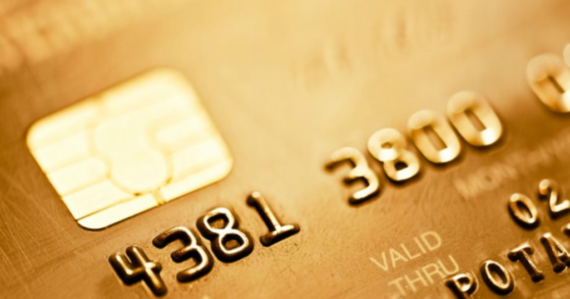

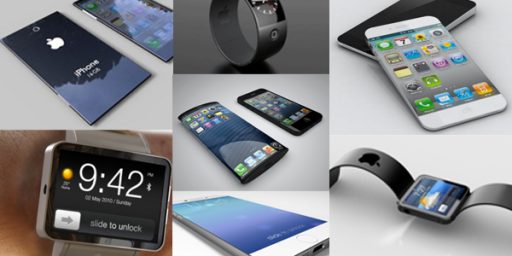
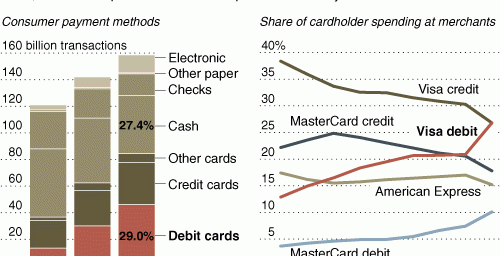

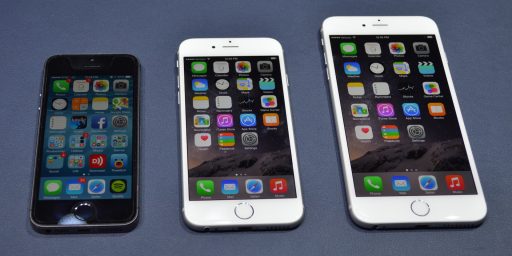
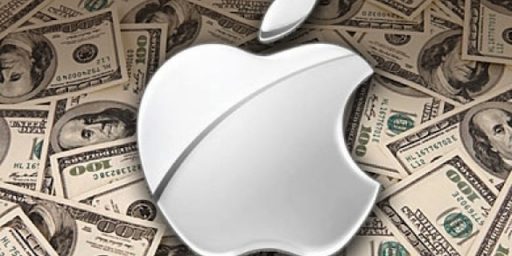
Signing a credit card receipt has always been a pain in the ass.
The last time I have to do that can’t come soon enough!
I’m glad to see it go the way of the quill pen.
(Comment Preview does not work.)
@Mister Bluster:
Oh I’m not the least bit sentimental about it.
(And yes, we are aware that Comment Preview isn’t currently working. It’s being looked into.)
A lot of places just make you scribble something without checking that it even is a signature. On all of the electronic “scribble your signature illegibly here with your finger or stylus” things, I now draw an animal.
My fear has been that at some point they will begin validating the signatures going forward with all the captured signatures, and I am going to have to be attempting to draw a squirrel in a very tiny box at the Target checkout just to buy toilet paper.
For more than a decade I’ve written “Check ID” in the signature block on the back of all my cards. Over that time, merchants have actually checked my ID about 10% of the time.
What makes signatures even more worthless is trying to sign on one of those tiny electronic screens. I gave up long ago trying to make those look anything like my actual pen-and-ink signature.
Remember a brief period decades ago when some banks wanted to issue cards with a photo of the card holder in the front?
But people are still writing checks. And usually when I am in a hurry and get in a checkout line behind someone who spends five minutes filling one it
out.
@Tyrell: I don’t mind so much that they’re slow at writing a check. What I hate is not even pulling the checkbook out of the purse until everything is scanned, bagged, and the total presented. You know you’re going to write a check. You know the name of the store and the date. And you’re standing there doing nothing. Start writing the check already.
@Kathy: My dad had one of those cards. Ironically, he got it just before he contracted shingles and became bed ridden for the rest of his life.
And you’re standing there doing nothing. Start writing the check already.
You gotta’ know those luddites do that just to piss you off.